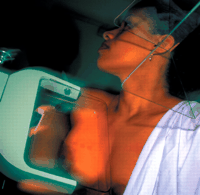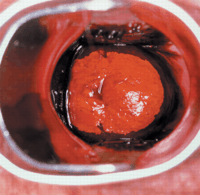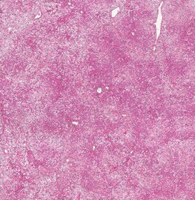This week in the BMJ
Volume 330,
Number 7497,
Issue of 23 Apr 2005
![[Down]](/icons/down.gif) Catch me as soon as you can
Catch me as soon as you can
![[Down]](/icons/down.gif) Tax the healthy rich to cure the sick poor
Tax the healthy rich to cure the sick poor
![[Down]](/icons/down.gif) Tamoxifen may cause steatohepatitis in overweight women
Tamoxifen may cause steatohepatitis in overweight women
![[Down]](/icons/down.gif) Improve your patients' informed consent about screening mammography
Improve your patients' informed consent about screening mammography
![[Down]](/icons/down.gif) Screening for chlamydia by post is feasible but incomplete
Screening for chlamydia by post is feasible but incomplete
Catch me as soon as you can
Rodney Ledward, a British gynaecologist whose multiple malpractices resulted in suspension in 1996, could have been identified from routinely collected hospital episode data before the scandal broke. Harley and colleagues (p 929) propose a statistical method for scanning multi-indicator, multi-year data in order to identify hospital doctors whose performance is not satisfactory and whose practice may need revising. Testing the method retrospectively on gynaecologists, they successfully identified Rodney Ledward, but they warn that interpretation of similar outliers is still unclear and further prospective evaluation of what seems to be a robust new method is needed.

| |
Credit: STEFAN ROUSSEAU/PA/EMPICS
|
|
![[To top]](/icons/back.gif)
Tax the healthy rich to cure the sick poor
Drug spending should be shifted from the worried well in developed countries to those with treatable disease in poorer nations, says Heath (p 954). One way to do it, she argues, would be to introduce additional taxes on preventive drugs and use the money to fund treatments in poor countries. She also points out that 70% of the UK population are taking drugs to prevent disease or enhance wellbeing and asks how this level of drug taking can be appropriate in a population that, by all objective measures, is healthier than ever before.

| |
Credit: SILVIO FIORE/TOPFOTO
|
|
![[To top]](/icons/back.gif)
Tamoxifen may cause steatohepatitis in overweight women
Tamoxifen, used to prevent recurrence of breast cancer, is associated with a doubled risk of developing non-alcoholic steatohepatitis in overweight women. However, in their prospective, randomised, double blind, placebo controlled trial of 5408 women, Bruno and colleagues (p 932) found no clinical, biochemical, ultrasonographic, or histological signs suggestive of progression to cirrhosis in the affected women after a median follow-up of 8.7 years. The authors also found that unexplained multiple elevations of alanine aminotransferase 1.5 times or more the upper normal limit were associated with steatohepatitis, making histological examination unnecessary for diagnosis.
![[To top]](/icons/back.gif)
Improve your patients' informed consent about screening mammography
Benefits and harms of biennial screening mammography are finely balanced. Barratt and colleagues (p 936) present easy to use, age specific estimates of benefits and harms, providing data that could help support individual women's informed choices about screening. Overall, for every 1000 women screened over 10 years, between 167 and 251 (depending on age) receive an abnormal result, 56-64 have at least one biopsy, and 9-26 have invasive cancer detected by screening. However, more breast cancers are diagnosed among screened women than among those who refuse screening, and fewer screened women die from breast cancer (for example, 33 v 20 diagnosed cancers and 4 v 6 deaths over a period of 10 years in 1000 women aged 50).

| |
Credit: ANDREA MOTTA/WELLCOME PHOTO LIBRARY
|
|
![[To top]](/icons/back.gif)
Screening for chlamydia by post is feasible but incomplete
Postal screening for genital Chlamydia trachomatis in the United Kingdom is feasible, but coverage was incomplete and uptake modest, and the screening ultimately seems to lead to wider inequalities in sexual health. Macleod and colleagues (p 940) invited 19 773 men and women aged 16-39 to participate in postal screening by providing a specimen collected at home. With coverage of about 70% and uptake of about 30%, the screening found an overall prevalence of just below 3% for men and almost 4% for women. However, prevalence was higher in younger people, especially younger women who were harder to engage in screening.

| |
Credit: SPL
|
|
![[To top]](/icons/back.gif)
Catch me as soon as you can
Tax the healthy rich to cure the sick poor
Tamoxifen may cause steatohepatitis in overweight women
Improve your patients' informed consent about screening mammography
Screening for chlamydia by post is feasible but incomplete




